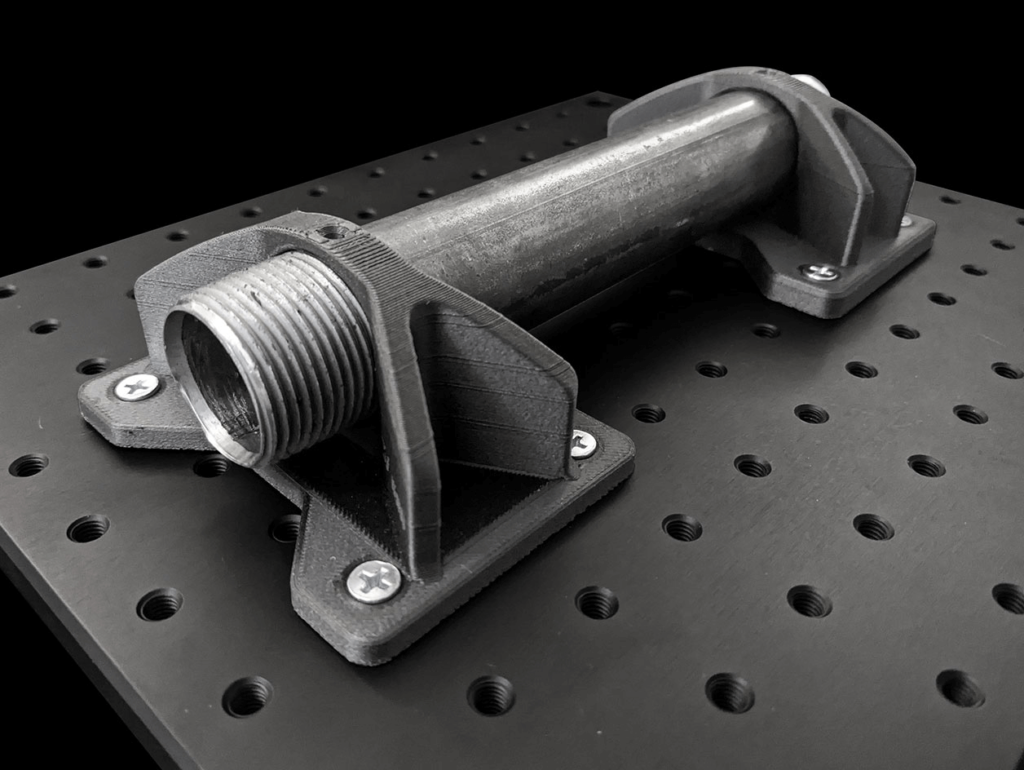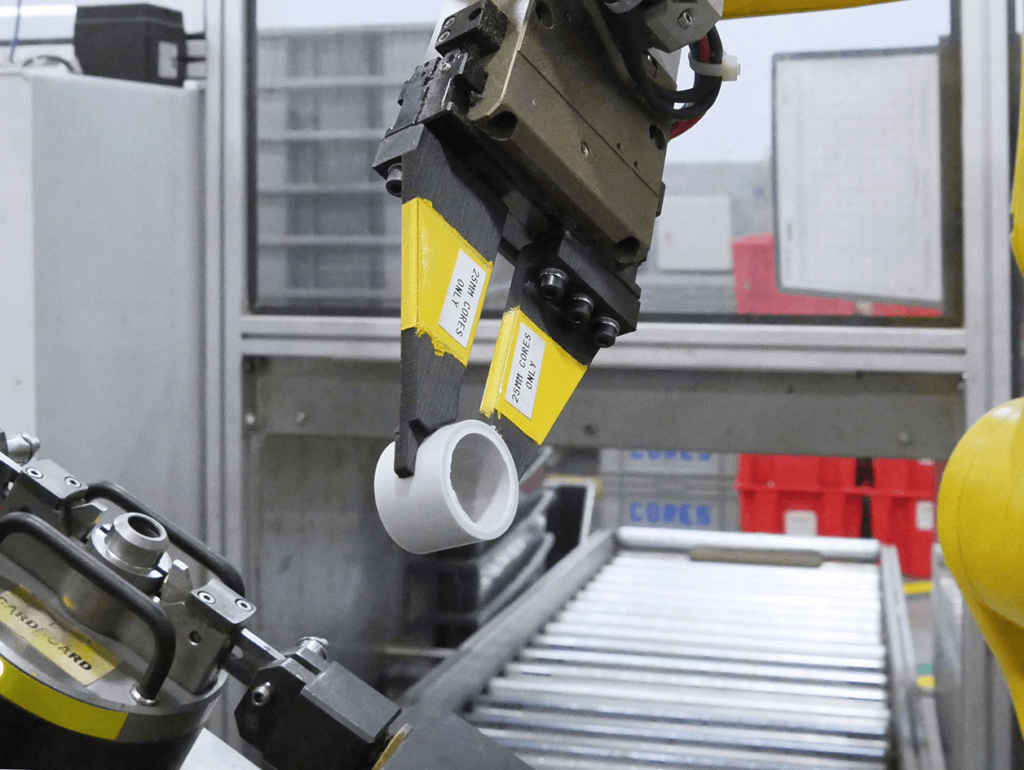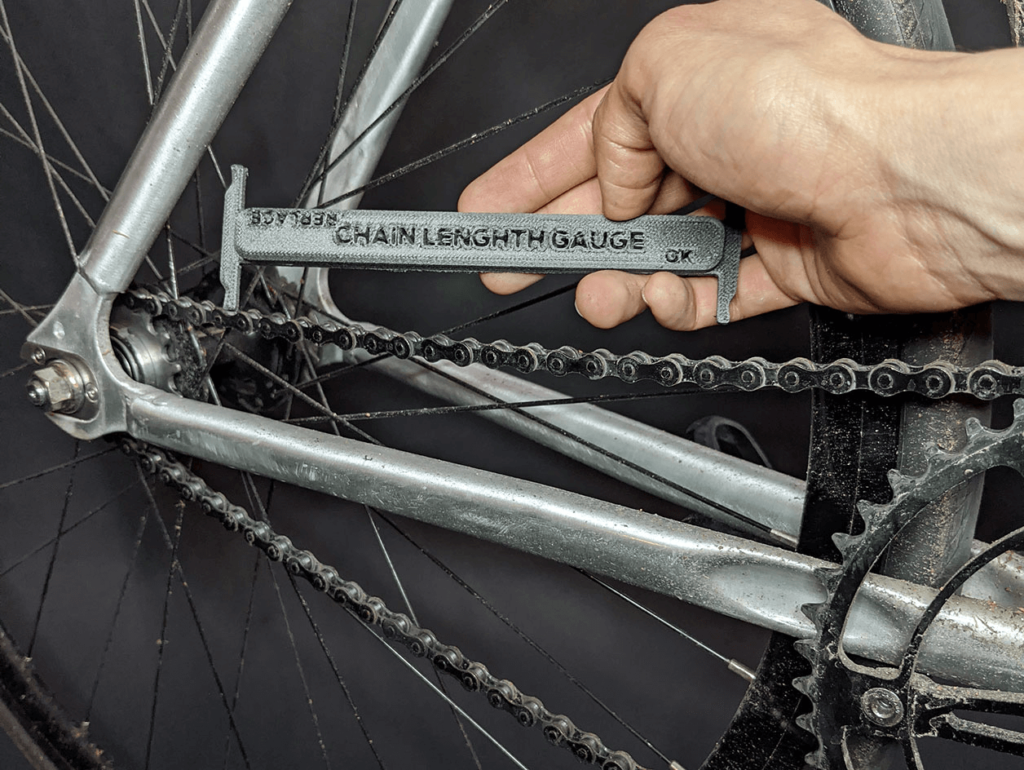
За да извлечете максимума от вашия 3D принтер, трябва да съобразите материала, който използвате, с изискванията на вашето приложение. Това е особено вярно при създаването на части с висока производителност, като тези с въглеродни влакна. В тази публикация ще разгледаме практическите приложения на 3D отпечатаните композити от въглеродни влакна в множество категории, за да проучим как този уникален материал води до ефективност и прецизност във всичко – от заваряване до роботизирана автоматизация.
3D печат от въглеродни влакна в действие
Следват четири примерни приложения, които се обслужват добре от уникалните свойства, предлагани от въглеродните влакна:
Подобряване на процесите на заваряване с приспособления по поръчка

Снимка: UltiMaker
В областта на заваряването прецизността и точността са от първостепенно значение. Персонализираните приспособления, специално проектирани да държат детайлите заедно преди процеса на заваряване, играят решаваща роля. Тези приспособления трябва да са здрави и устойчиви на топлина, предвид високите температури, свързани със заваряването.
Едно от предимствата на 3D печатането с въглеродни влакна е, че е възможно да се създават персонализирани тела, които отговарят на тези строги изисквания. Високата температура на топлинна деформация и твърдостта на новия UltiMaker PET CF след отгряване, по-специално, го прави идеален за задачата. Възможността за проектиране на тези приспособления в CAD и директното им отпечатване намалява работното време и осигурява плътно прилягане с толеранс, подобрявайки цялостната ефективност и качество на процеса на заваряване.
Приспособления за огъване за многостранно оформяне на метални т
Щанцовете за огъване са важни инструменти, използвани с хидравлична преса за оформяне и оформяне на метални части. В зависимост от спецификата на работата или изискванията на съоръженията, тези части може да се нуждаят от често персонализиране. Традиционните производствени методи могат да отнемат време и да са скъпи за такива случаи.

С технологията за 3D печат можете да създавате персонализирани матрици за огъване бързо и ефективно. Композитите от въглеродни влакна се открояват като избран материал тук, благодарение на изключителната си твърдост. Това означава, че частта може да поддържа формата си при по-голям натиск от много други полимери, като се гарантира, че матрицата поддържа предвидената форма и произвежда точни, висококачествени метални части.
Роботизирана автоматизация с инструментална екипировка в края на ръката

В областта на автоматизацията на производството, роботизираните ръце са безценни инструменти за извършване на повтарящи се задачи с изключителна прецизност. Инструментите в края на тези рамена, известни като “крайни изпълнители”, могат да варират значително в зависимост от конкретното приложение, от устройства за захващане до заваръчни горелки.
Възможността за 3D отпечатване на тези крайни ефектори с композити от въглеродни влакна представлява възможност, променяща играта. Леката природа на композита от въглеродни влакна намалява общото тегло на роботизираната ръка, увеличавайки нейния полезен капацитет, скорост и маневреност. Това не само повишава производителността, но и удължава живота на роботизираната ръка чрез намаляване на износването.
Осигуряване на прецизност с инструменти за подравняване

Инструменти за подравняване или измервателни уреди се използват в процесите на производство и сглобяване за бързи и прецизни измервания. Тези инструменти трябва да са твърди, за да се гарантира, че няма да се огъват или компресират по време на измервания, което може да доведе до неточности и непоследователни сглобки.
Композитите от въглеродни влакна, с присъщата им твърдост, са отличен избор за тези инструменти. Възможността за 3D отпечатване на тези инструменти означава, че можете да ги персонализирате за всяко конкретно изискване за измерване, като гарантирате, че вашият производствен процес е възможно най-точен и ефективен.
За повече информация относно печатането с въглеродни влакна, включително насоки как можете да спестите време и пари, свържете се с нас – екипа на 3MG Bonev Ltd.
0 Comments